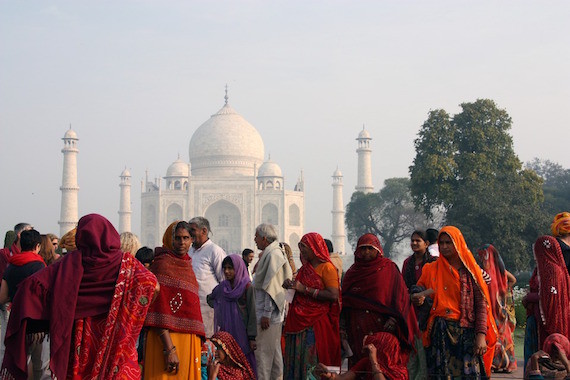Andrew Bardsley, Chivas Regal’s global marketing manager and Sumit Sharma, Pernod Ricard India’s senior marketing manager, were speaking to Drinks International at the recent TFWA exhibition in Cannes.
Bardsley said: “There are 60m new consumers coming of legal drinking age every year. That is a large amount of people looking for brands and something new to drink. It represents a massive opportunity.”
At present the top Indian whiskies are; Diageo United Spirits’ McDowell’s No 1 followed by Pernod Ricard’s Imperial Blue and Royal Stag and then United’s Officer’s Choice Blue. Across Asia, Imperial Blue and Royal Stag are numbers two and three, according to IWSR data for the fastest-growing spirits brands by volume. Thai whisky, Hong Thong, is number one.
Sumit was saying that due to state duties levied on spirits, the arbitrage between the duty free and domestic prices could be up to 60%. With many cheap domestic whiskies being made from molasses, so technically a rum, the Pernod team see airport sales as the most important sector to get Indian whisky drinkers to taste 100% scotch whisky. Locally made whiskies can be as cheap as €3-4.
The target consumers are India’s emerging middle class, which Sharma defines as 25 to 40-year-olds. Whereas it was once taboo to be seen conspicuously drinking alcoholic drinks in public, that is now changing, according to Bardsley and Sharma.
There are 25 cities in India with with more than 1m inhabitants. Cities such as Delhi and Mumbai are classed as first tier by PR India. Bangalore and Kolkata (Calcutta) are classed as second tier. Bardsley comments that smaller cities in tiers three and four, themselves represent “massive opportunities”.
Many Indians are increasingly going on short getaway holidays and long weekend breaks to destinations such as Thailand and Dubai. These returning travellers provide further opportunities. Apparently Indians departing India between January and December 2016 jumped 12% on the numbers the previous year.
Bardsley said travellers leaving India are predicted to grow double digit year-on-year, to 2030.

|
In the domestic market, Pernod Ricard is looking at offering differing, smaller, bottle sizes to compete on price with cheap, local whiskies looking to occasions when an Indian whisky drinker just wants two or three measures of an evening.
“We have a range of sizes so we have the appropriate offering for every type of consumer,” said Sharma.
Sales of Imperial Blue (18m cases) and Royal Stag (16.5m) are both in growth, according to Bardsley and Sharma. “It testifies to the fact that people are looking to step up in quality,” said Sharma.
As to its blended scotch whisky brands, Chivas Regal is aimed at 28 to 40-year-olds who have developed their career and maybe in their second or third job. Whereas Ballantine’s majors on music and is aimed at a younger consumer, 21 to 27-year-olds. In global travel retail, Chivas volumes are three times those of Ballantine’s.
As Bardsley sums up the “elephant in the room” are the prohibitive import tariffs, which both the UK government and the Scotch Whisky Association are battling to have at least lowered. They used to be 400% but are now down to circa 150%. “That is a wall right now,” said Bardsley.
Sharma points to a recent move by the Indian government, to ban alcoholic drinks sales from liquor stores on major highways. That is likely to have a significant effect on spirits sales.
So despite tariffs, national and regional government interventions to curb drinking, India remains a “massive opportunity” according to the Pernod Ricard team.




